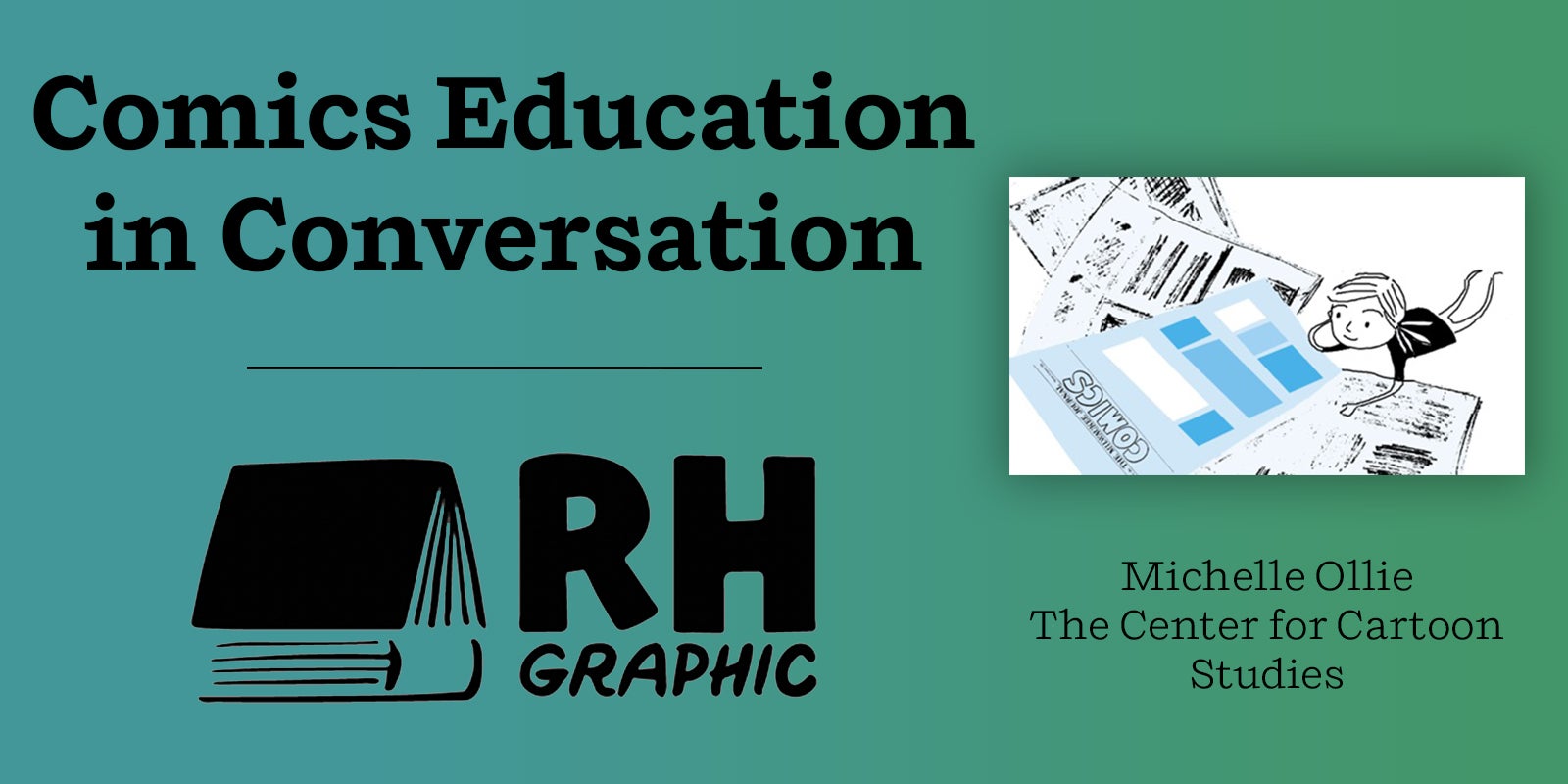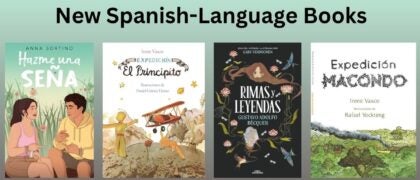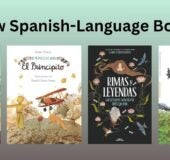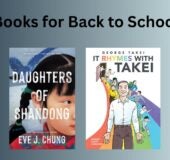Michelle Ollie is co-founder and president of The Center for Cartoon Studies (CCS), a nonprofit college and studio based in Vermont. CCS studio has produced a series of multiple Eisner Award-winning graphic biographies about iconic historical figures and The Cartoonist Veteran project. Ollie was previously a director and faculty at the Minneapolis College of Art and Design. She teaches design and serves on several nonprofit boards. cartoonstudies.org
How did you get started reading comics?
Sunday newspaper strips were my first introduction to comics, followed by vintage floppies that my father picked up at local flea markets. This experience of reading comic strips was pivotal for me learning to read. I’m forever grateful for Sunday Comics, Peanuts, and my dad.
How did you get from your first comics-reading experience to comics academia?
Learning to read was the starting point for me with comics. I never anticipated the role comics would play in my life or in academia. Higher education wasn’t a path expected for me. I was a first generation college student and struggled in all years of school given my dyslexia. I ultimately persisted and began my pursuit in higher education by enrolling first in a local community college and eventually was accepted into a doctoral studies in education and technology program.
My background prior to co-founding The Center for Cartoon Studies was mostly in education, design, and publishing. When I was a director and faculty at Minneapolis College of Art and Design I was drawn to the comics major and was working closely with faculty member Barb Schulz helping students to self-publish their work in a class anthology. For me, the process of students learning production and design skills, and then seeing the finished form of their work, was formative in both displaying technical proficiency and in expanding the opportunity for them to share their stories. I think comics carry a unique opportunity in academia, the skills acquired are tangible, and the ability to create and sell your work in many forms is exciting and ever expanding.
Have you seen a change in the academic and/or popular reception of comics and graphic novels over the course of your career?
Yes! Conferences, conventions, publishers and distributors have grown and welcomed new audiences to comics. I’m particularly glad to see diverse comic creators getting attention and becoming more prominent.
A drastic growth in readership with YA has also had an incredible impact on the future of graphic novel readers, and it’s hard to imagine a library where patrons aren’t begging for more titles. The trajectory of these young readers is promising for the future of comics!
Graphic novels are now on syllabi and are a required reading at colleges and universities. CCS has collaborated with schools, libraries, and colleges across the country conducting workshops and lectures on comics.
Comics are a proven medium for literacy and learning. At CCS we’re creating comics for a myriad of applications from mental health, literacy, and democracy, to name a few. These comics are used in curricula at schools and colleges and are another example of the power of the medium with both visual communication and learning.
You started a whole school dedicated to comics education, The Center for Cartoon Studies! How and why did that come to pass?
A whole school dedicated to comics! This was the idea behind The Center for Cartoon Studies (CCS). I co-founded CCS with award-winning cartoonist and educator James Sturm in 2005. Prior to CCS, we were both teaching in higher education. The school came out of a need for a curriculum dedicated to comics, with an emphasis on self-publishing and distributing work. Most colleges were founded in the 1940’s, heavily entrenched in a traditional pedagogical approach, and were situated in environments that often pulled students away and distracted them from their work. A less immersive structure and community often left the comic-focused students with little support or guidance. CCS curriculum is synthesized, courses build on and connect to each other, and are heavily based on projects, skill building, and collaboration. The CCS program is dedicated to cartooning, covering all aspects of creating comics, from writing and drawing, history and practice, to design and production.
How does comics education fit into the traditional MFA landscape?
I think it fits well in the MFA landscape as a unique path for those students with a clear focus on comics, wanting to dive deep into learning the skills, creating comics, and exploring the professional practice. Having a program that supports student inquiry, and fostering development with a structured curriculum and program dedicated to that pursuit, makes great sense. Many MFA programs are self-directed with few courses. CCS’s program is immersive and rigorous. Creating comics is a labor intensive process, and building a practice within a supportive comics community is equally as important as developing the skills to write and draw comics.
What does the curriculum at CCS look like? What do you think is important for students wanting to make comics to learn?
CCS curriculum focuses on drawing, writing, and design. Classes are synthesized by the faculty to capitalize on core learning topics, with activities and projects that include finished published work.
Courses are all taught by working cartoonists, and over 40 guests visit classes annually for presentations or workshops. This ongoing exposure to cartoonists, designers, editors and publishers provides a constant source of insight and network to the various paths and pursuits from webcomics, design and production, self-publishing, editing, and trade publishing etc. Visiting artists speak as colleagues to the students in a confident space, and provide students with authentic conversations about their practice, issues, and opportunities. I think it is an important part of our program that often leads to discovery and helps students prepare for life after graduation.
What kind of work in the comics space do students at CCS go on to do?
Graduates from CCS are in all areas of the comics space, including self-publishing and distributing their comics, producing web comics, creating comics for independent and trade publishers, etc. They are working with agents to build their portfolios, getting hired for editing and design projects, hired for production and coloring of comics, and even heading up graphic novel imprint. Similar to many MFA art and design programs, students and graduates are doing freelance work. Some have launched their own publishing houses or studios. A few examples include: Eleri Harris ‘14 is the deputy editor of The Nib, Andrew Arnold ‘07 is heading up Harper Alley, Robyn Smith ‘17 is the artist behind Nubia: Real One, Donna Almendrala ‘12 is a Vice President at the Peanuts Studio, Tillie Walden ‘16 won the 2018 Eisner Award for Best Reality-Based Work for her CCS thesis graphic novel Spinning (making her one of the youngest Eisner Award winners ever), and Sasha Velour ‘13 who was the winner of RuPaul’s Drag Race season 9, and internationally recognized drag queen, artist, and producer, points to comics as the inspiration and process for creating their characters and shows. Graduates from CCS are often prolific and remain connected to the comics community.
You’ve been the President of the Vermont Higher Education Council. How does the rest of higher ed fit together with the unique, particular program you run at CCS?
CCS program builds off the general framework of higher education, and that community here in Vermont and beyond remains a source of collaboration and support. Collaboration with schools and universities are ongoing, and have broadened our reach and the student experience. CCS has given talks, conducted workshops, curated exhibitions at many places, including Vermont Law School, The Animation Workshop, Middlebury College, and Dartmouth College to name a few. We are currently working on a project with Dartmouth’s Leslie Center for Humanities on equity and curriculum design with students from both CCS and Dartmouth. Graduates of CCS are teaching at colleges and universities, including School of the Art Institute of Chicago, Champlain College, California College of the Arts, and Stanford University.
There’s long been a call for increased diversity in comics – and that’s only gotten more prominent. What are you seeing changing in this space today?
In recent years I’ve seen more conventions, conferences, and festivals supporting the work by BIPOC and in those from the queer space. Flamecon, Queers and Comics, the diversity databases (Cartoonists of Color Database, Disabled Cartoonists Database, and Queer Cartoonists Database) created and maintained by cartoonist MariNaomi (Turning Japanese, Kiss and Tell) are providing opportunities for underrepresented creators.
We need more diverse creators, perspectives, and stories for all of us to see ourselves in.
Favorite or new graphic novel recommendations?
Flamer by Mike Curato is a semi-autobiographical story set at a Boy Scouts summer camp, follows a teenager struggling with self-hate and all the different parts of his identity — being a Catholic, a Boy Scout, and being gay.
Montana Diary by Whit Taylor is a travelogue comic chronicling a road trip through Big Sky. Whit seamlessly mixes tourist observations with her reflection on environmental catastrophe and white supremacy.
Are you listening? by CCS graduate Tillie Walden ‘16 is an intimate and emotional story about friendship, grief, and healing.
Grass by Keum Suk Gendry-Kim is a story on the life story of a Korean girl named Lee Ok-sun who was forced into sexual slavery for the Japanese Imperial Army during the second World War.
I’m A Wild Seed by Sharon Lee De La Cruz is a personal story that reveals the intersectionality of queerness and blackness, and impact of oppression on coming out.
Stepping Stones by CCS graduate Lucy Knisley ‘09 is a story inspired from her own childhood in an amazing journey of unlikely friends, sisters, and home. This is the first in a trilogy, Peapod Farm.





